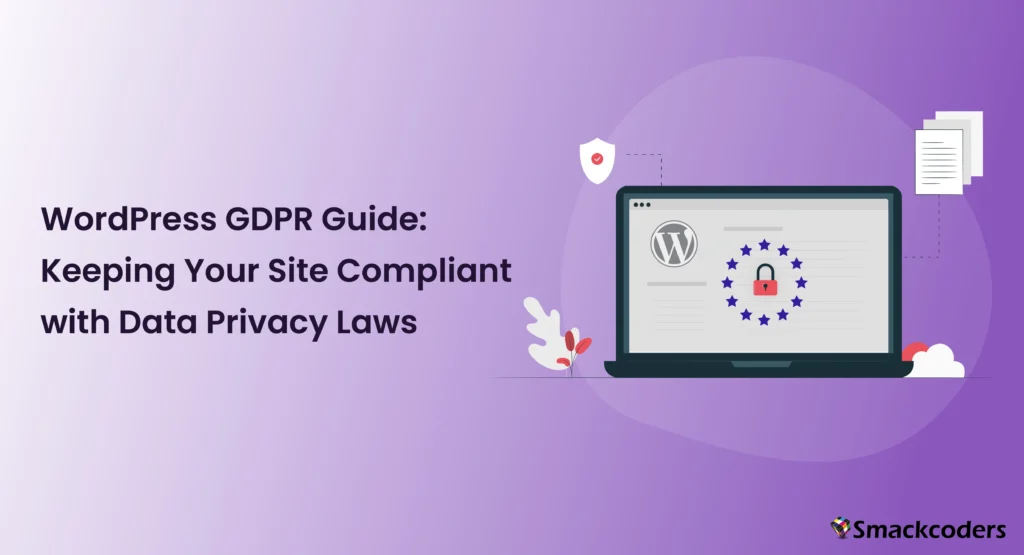
Table of Contents
The moment you start collecting user data on your website, you’re stepping into GDPR territory, even if it is something as simple as an email address through a contact form.
But no need to panic. You don’t have to be a legal expert to stay on the right side of the law.
In this guide, we will discuss what WordPress GDPR is, why your site should comply with it, and what consequences you could face if your website does not comply with data privacy laws. Not just that, we will also provide you with the solution of how to make your site compliant with data privacy laws.
Let’s move on to the details!
What is WordPress GDPR, and Why You Should Comply?
GDPR (General Data Protection Regulation) is a data protection law that applies to anyone who collects or processes data from users in the European Union. It doesn’t matter where you’re based. If your website can be accessed from the EU, you’re expected to comply.
That is how serious this law is.
When we talk about GDPR, we should also discuss its basic requirements for site owners. GDPR prioritizes protecting user data and giving people control over how their data is being used.
Here are the key requirements WordPress site owners should follow:
- Get clear consent before collecting personal data like names, emails, or cookies.
- Explain what you’re collecting and why in simple language.
- Let users opt out of data collection when possible.
- Allow users to access, correct, or delete their personal data on request.
- Keep data secure and notify users if there’s a breach.
And here are some fundamental rights users have under GDPR:
- The right to know which data is gathered
- The right to access their data
- The right to request changes or deletion
- The right to restrict processing
- The right to object to data use
Following these rules does not mean you are just trying to avoid penalties, but it also shows that you care about your visitors and their privacy.
While GDPR is one of the most widely recognized data privacy laws, it’s not the only one. Depending on where your visitors come from, other regulations like the California Consumer Privacy Act (CCPA) or Brazil’s LGPD might apply to your website, too. However, we focus on GDPR here because it’s considered one of the strictest and most thorough privacy frameworks and complying with it usually puts you in good standing with others as well.
Consequences of Not Complying with Data Privacy Laws
It doesn’t matter if you are a small site owner, a big business site, or even just a blogger; compliance with data privacy laws is a must. Failing to comply with GDPR can be risky.
Here’s what could go wrong:
Fines
You could be fined up to €20 million or 4% of your yearly revenue, whichever is higher. Even smaller slip-ups could still cost you up to €10 million or 2% of turnover, so it’s better to play it safe.
Legal Issues
Users or regulators can take legal action if they believe you’ve mishandled personal data.
Loss of Trust
If people feel unsure about how their data is handled, they might avoid signing up or making purchases on your site.
Bad Reputation
News spreads fast online. A single complaint can harm your reputation and cost you visitors and clients.

WP Ultimate CSV Importer Pro
Get Ultimate CSV/XML Importer to import data on WordPress faster, quicker and safer.
Best Ways to Make Your WordPress Site GDPR-Compliant
Here are some beginner-friendly ways to keep your website compliant with data privacy laws:
1. Add a Cookie Consent Banner
One of the first and most visible steps is adding a cookie consent banner. This banner should appear the moment someone visits your website, before any non-essential cookies (like tracking or advertising cookies) are loaded. It should clearly inform users about cookie usage and give them the option to accept, reject, or manage their preferences. This kind of control is not just a legal requirement, it helps build trust and clarity.
This measure is widely recognized in data privacy, as you might have personally come across these banners on almost all of the websites you visit. The image below is an example of a cookie consent banner.

2. Write a Clear Privacy Policy
A transparent privacy policy is a must. It should describe what personal data you collect, the reasons behind collecting it, how it’s processed and stored, and with whom it’s shared. Make sure this document is easy to access. Most websites place it in the footer or navigation menu. If you’re not sure where to start, many GDPR plugins offer privacy policy templates that you can customize to suit your site.
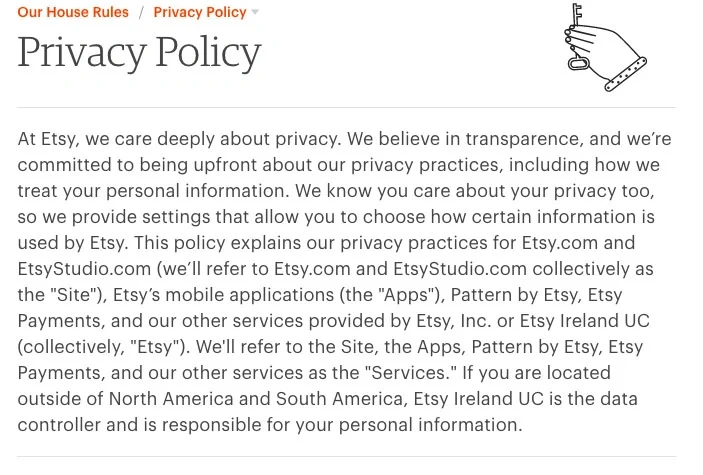
This is an example of Etsy’s privacy policy.
3. Use Consent Checkboxes in Forms
Whether it’s a simple contact form or a newsletter signup, every form that collects personal data should include a required consent checkbox. This checkbox should be left unchecked by default and accompanied by a brief explanation of how the data will be used, along with a link to your privacy policy. It’s a small but essential step to ensure your visitors are willing to provide their information.
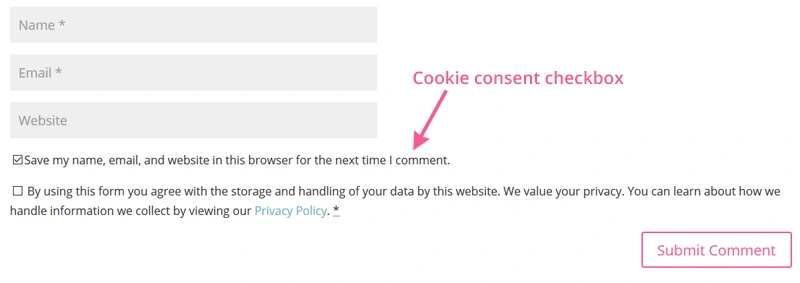
4. Allow Users to Control Their Data
GDPR requires that users should have access to the personal data you hold about them. You need to offer clear ways for them to request this data, correct it, or ask for it to be deleted. Some plugins provide self-service dashboards where users can make these requests. If you don’t use a plugin, you should at least have a visible contact method where users can send such requests, and make sure you respond within the legally required timeframe.
5. Keep Everything Updated
Staying GDPR-compliant isn’t a one-time setup. As your site grows or as laws evolve, you’ll need to regularly review your privacy practices. Keep all your GDPR-related plugins updated, revisit your privacy policy periodically, and stay informed on legal changes. Being proactive ensures that you’re not caught off guard by compliance gaps and helps maintain your site’s credibility.
Top WordPress GDPR Plugins to Help You
Here are some popular WordPress GDPR and cookie consent plugins:
Complianz Plugin
This all-in-one GDPR and cookie consent plugin offers region-specific banners, privacy policy generators, and user data request forms. A free version is available, and the premium starts at around $59/year for a single site.
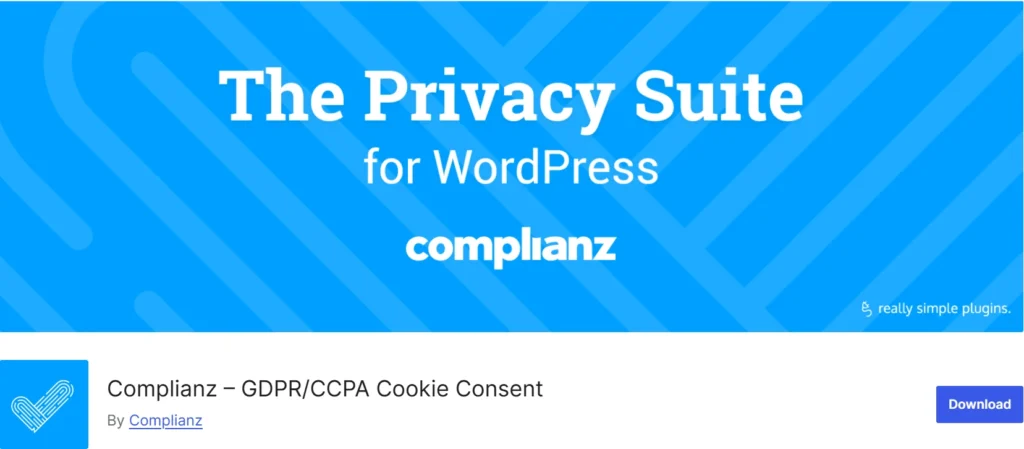
CookieYes
A popular choice for cookie consent with easy banner customization and geo-location features to display notices only where required. It offers a free version, with paid plans starting at $10/month for additional features.
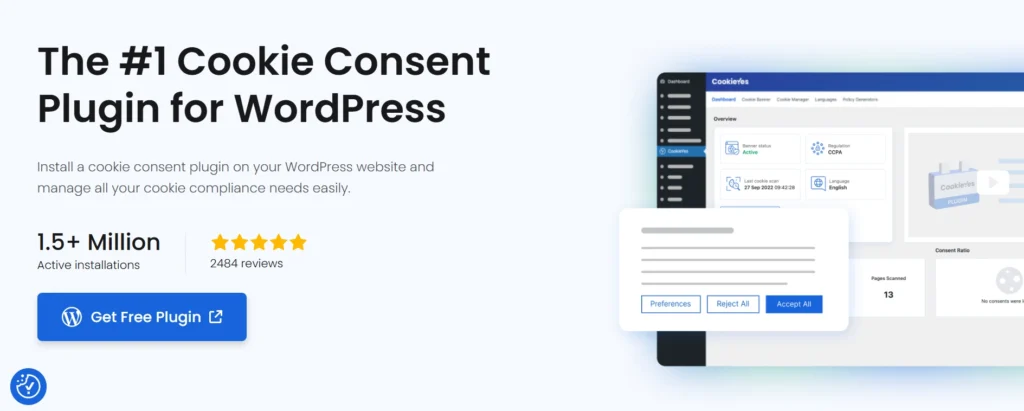
Cookiebot CMP WordPress Plugin
This plugin automatically scans your site for cookies and blocks them until user consent is obtained. It’s suitable for sites with many third-party scripts. The Free version supports up to 1000 sessions, and the paid plans start at €7/month.
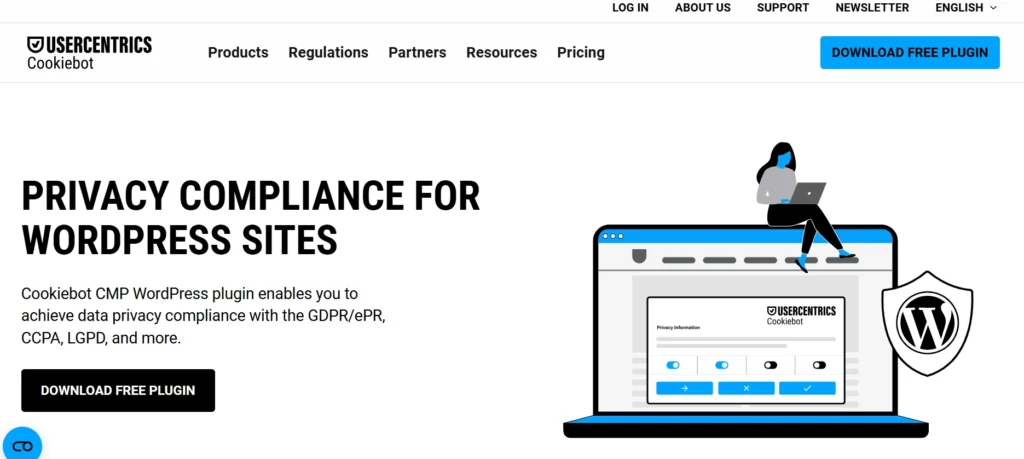
GDPR Cookie Compliance
A simple and lightweight plugin that helps you add customizable cookie consent banners and helps in managing cookie-related compliance aspects. The free version is great for smaller sites looking for basic compliance support. It also offers a premium version starting from €59/year for a single site.
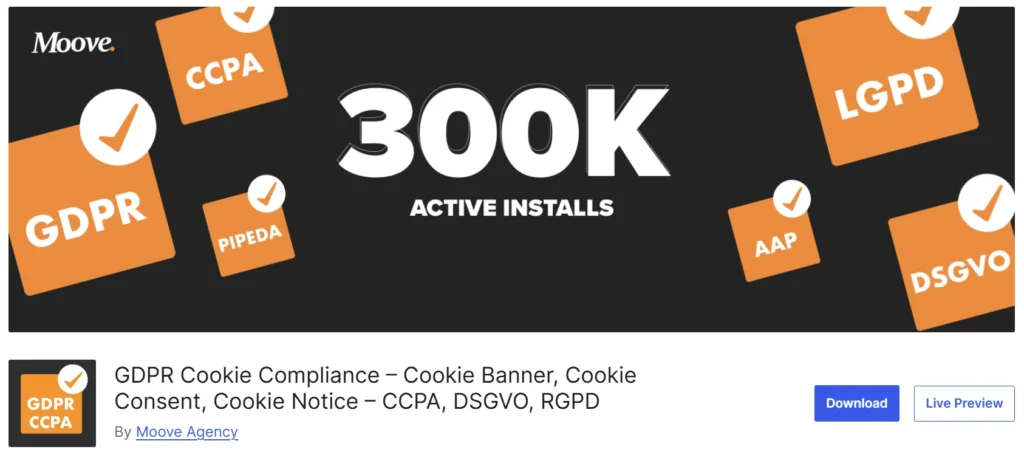
WP GDPR Cookie Consent Plugin by WebToffee
Offers pre-designed banners, auto cookie scanning, and logs of user consent. It does not offer a free version; the premium version starts from $69/year.
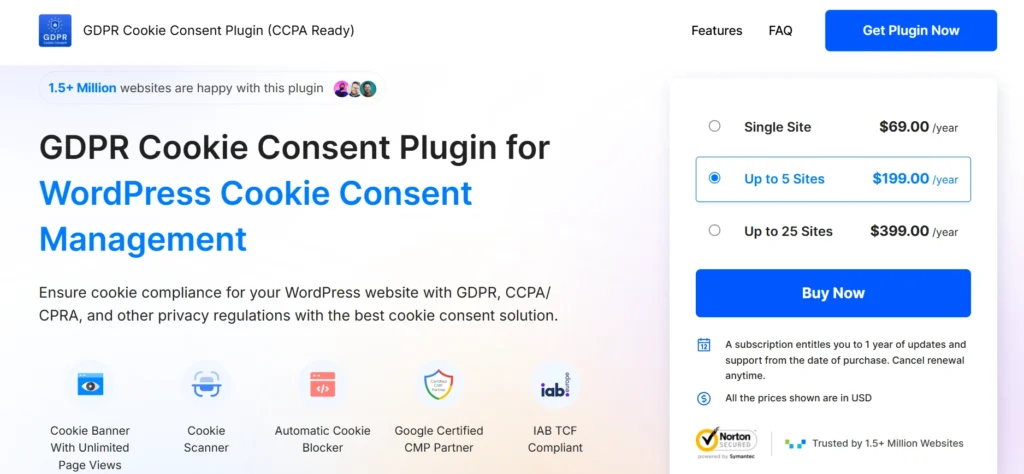
These tools can handle most of the compliance work behind the scenes so you can focus on running your site.
Conclusion
Staying GDPR-compliant on WordPress doesn’t have to be overwhelming. With the right tools and a little bit of effort, you can protect your visitors’ privacy and build a more trustworthy site.
Start with the basics – add a cookie banner, write a simple privacy policy, and make sure every form asks for consent. You can also use one of the recommended GDPR plugins to automate data requests and handle cookies properly.
All of this may sound like a lot, but it’s absolutely doable, especially when you have the right tools in your corner. And while we’ve shared everything to the best of our knowledge, keep in mind we’re no legal experts. If your site deals with complex data handling or you’re unsure about anything, it’s always a good idea to consult a qualified legal professional.

WP Ultimate CSV Importer Pro
Get Ultimate CSV/XML Importer to import data on WordPress faster, quicker and safer.



